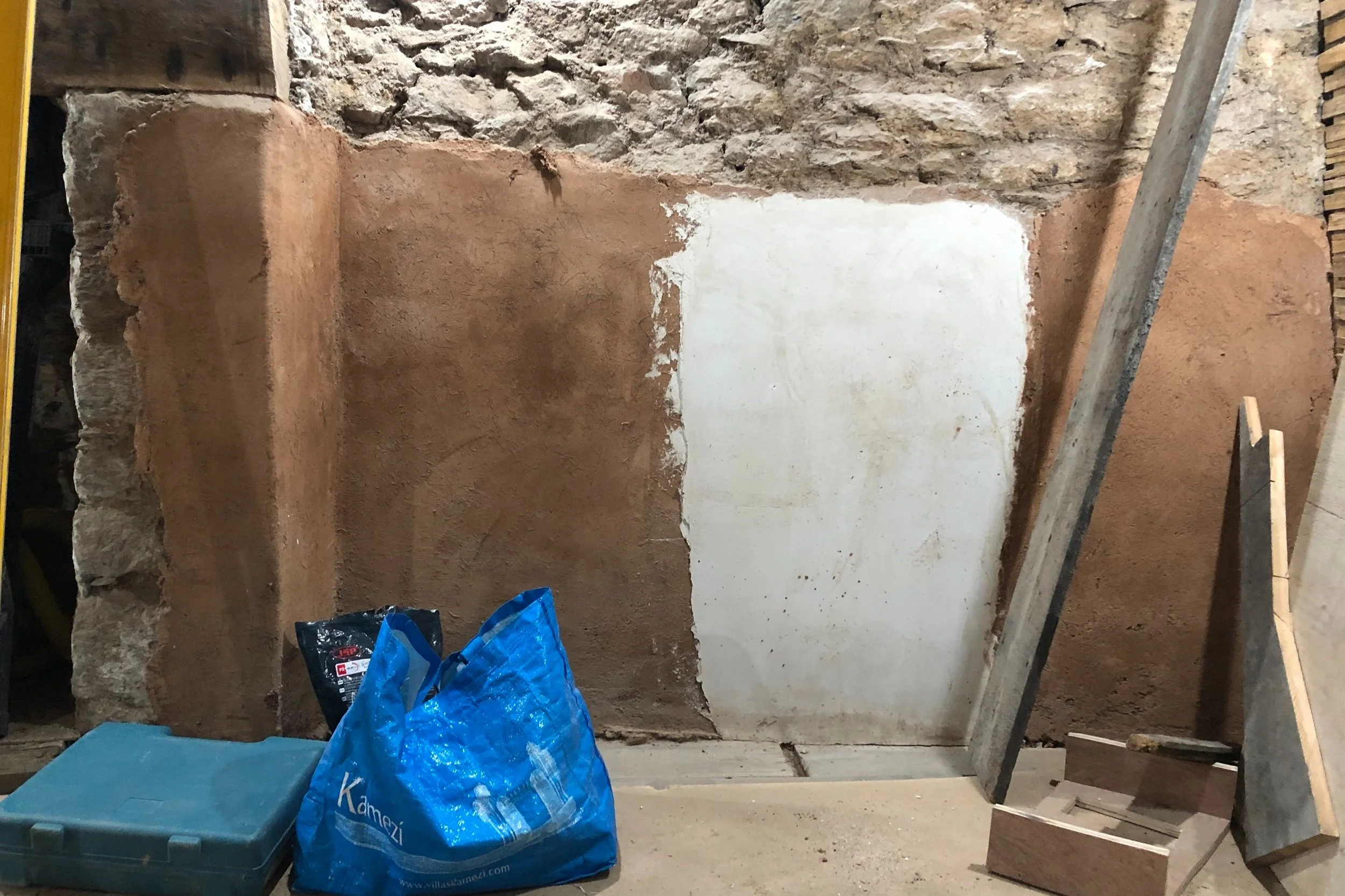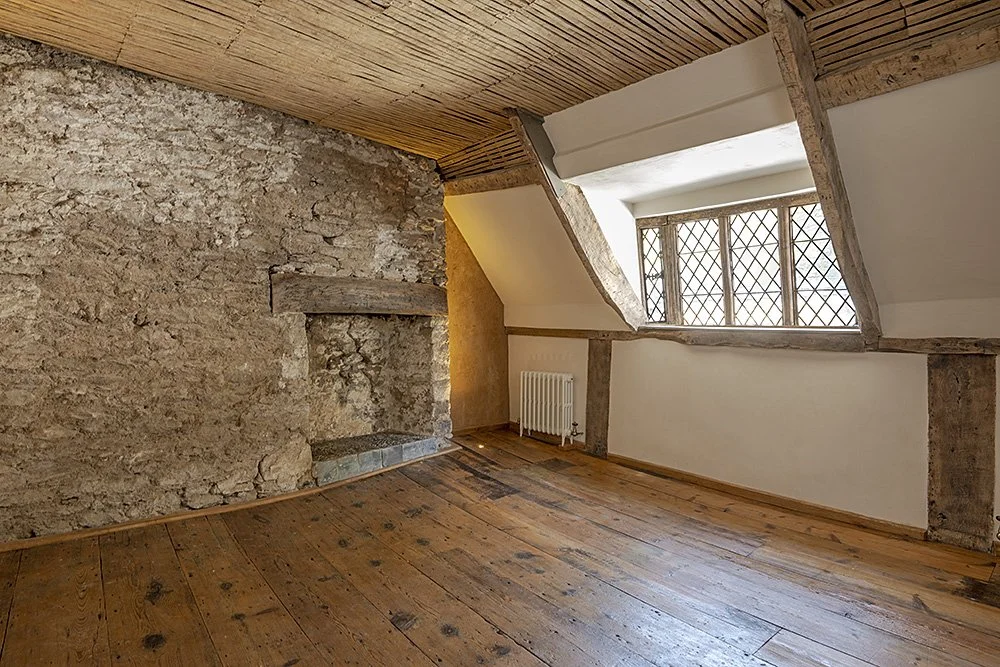Plaster repairs
Options for plaster consolidation were limited as a result of the poor condition of the structure and that the inner east wall was a party wall. Any plaster repair had to be carried out from the face of the plaster. The repair approach was therefore to carryout plaster replacement using traditional plasters based on the original mixes.
Failure of plaster to soffit of window and either side
A condition survey was undertaken to identify plaster repairs required, push test confirmed areas where the structure of the plaster had failed and areas of visually poor plaster through a combination of previously poor fills and poor historic repairs.
In addition, removal was scheduled to enable the structural work to be assessed, removal of cement-based plaster and plaster on the west masonry wall which had been suffering from damp for many years to dry out.
Opening up works and a plaster condition survey by Phillip Gaches revealed surviving sections of an earth-based plaster, chalk-based plaster, traditional lime plasters as well as modern cement plaster repairs.
Opening up
Messenger Construction commissioned Paul d’Armada of Hirst Conservation to analyse the mortar and specialist in Cob building, Kevin McCabe was contacted to put together the plaster based on the historic mix. Site trails of the mix were carried out on site and the results were approved by all – this proved a great success on a product that none of the design team had used as a finish plaster before.
Earth plaster trials based on the original mix found on the walls. The white patch is a lime plaster skim
Far right. Section of new earth plaster left exposed to demonstrate methods of construction techniques employed
james mackintosh architects limited
First Floor, 21 The High Street,
Chipping Norton, Oxfordshire
OX7 5AD
01608 692 310 / 07880 727 150





